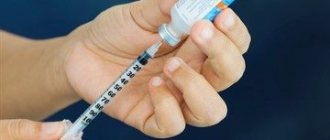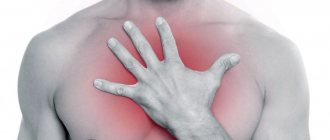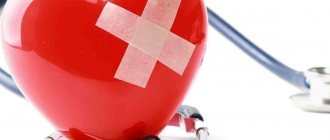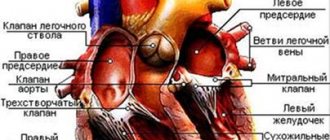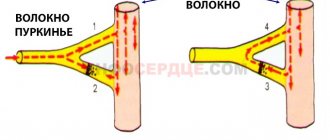Sudden cardiac arrest kills about 300,000 people worldwide each year. Once a year, at least, the media reports another death from sudden cardiac arrest: an athlete right on the field during a game or a schoolchild in physical education class. But many people die for the same reason, falling asleep and not waking up.
Like 43
160251
According to the Ministry of Health, in Russia alone, from 8 to 16 people per 10 thousand of the population die annually from sudden cardiac arrest, which is 0.1-2% of all adult Russians. In the whole country, 300 thousand people die this way every year. 89% of them are men. In 70% of cases, sudden cardiac arrest occurs outside the hospital. In 13% - at the workplace, in 32% - in a dream. In Russia, the chances of survival are low - only one person out of 20. In the USA, the likelihood that a person will survive is almost 2 times higher. The main cause of death is most often the lack of timely assistance.
Unfortunately, 22% of patients experience sudden death, the first manifestation of the disease. Sudden death most often occurs in older children and adolescents, but is rare in children under 10 years of age. Approximately 60% of sudden deaths occur at rest, the rest after heavy physical exertion.
- 570
More details - 162
More details
- 198 186
More details
- 222
More details
Most people who experience sudden cardiac arrest have:
- mental disorders in 45%;
- asthma in 16%;
- heart disease in 11%;
- gastritis or gastroesophageal reflux disease (GERD) in 8%.
Causes and risk factors
Emergency measures must be taken within the first seven minutes; it is almost impossible to survive after this period if the heart has stopped. In extreme situations, survivors will remain disabled or fall into a coma. This happens because brain cells quickly collapse in the absence of oxygen, and behind them, other vital organs cease to function normally. First aid most often has to be provided to people who are far from medicine. But, unfortunately, they are rarely capable of self-control and do not always have sufficient knowledge in this area.
Cardiac arrest is diagnosed when the organ stops pumping blood without making contractile movements. Most often, the myocardium ceases to function during diastole. Blood no longer circulates in the organs, they are left without oxygen and nutrients, all vital processes in them also stop, and irreversible death of cells and tissues begins.
Such a condition cannot arise on its own. There are reasons for everything. They may be associated with pathologies of the circulatory system and its main organ. This is the most common explanation for most cases of sudden death. There are other conditions that can lead to cardiac arrest and death.
Types of cardiac arrest:
- Quite rarely occur: asystoles (bioelectric activity and heart contractions are completely absent), electromechanical dissociative states (electrical impulses are generated, but do not cause contractile activity in the ventricles), paroxysms of ventricular tachycardia (frequent contractions of the chambers are present, but the pulse is not audible).
- The vast majority of cardiac arrests are associated with atrial fibrillation (individual groups of muscle cells of the ventricles contract in a chaotic manner, but the function of pumping blood is not performed).
Cardiac pathologies as the main cause of heart failure:
- Acute myocardial failure.
- Acute coronary syndrome or manifestation of coronary heart disease (associated with thrombosis, atherosclerosis, arterial stenosis)
- Extensive myocardial infarction.
- Heart defects associated with abnormalities of the valve apparatus and coronary vessels.
- Cardiomyopathy.
- Pulmonary embolism.
- Ruptured aortic aneurysm.
- Severe inflammatory process in the myocardium.
- Development of cardiogenic shock.
- Cardiac tamponade developing due to hydropericardium or hemopericardium.
- Brugada syndrome (a genetic metabolic disease that causes sudden attacks of ventricular tachycardia). This pathology is a common cause of cardiac arrest in young people (half of all incidents).
- Hypertensive crisis.
Chronic or acute conditions associated with damage to internal organs and the brain can also cause cardiac arrest:
- Brain disorders (hemorrhage and tissue necrosis).
- Kidney and liver dysfunction.
- Oncological diseases.
- Infections (eg meningitis).
- A severe form of diabetes mellitus that can lead to diabetic coma.
- Complications of pulmonary diseases (bronchial asthma attack).
Causes of sudden cardiac arrest not directly related to diseases:
- Significant blood loss (more than half the normal volume).
- Different types of shock (anaphylactic, traumatic, bacterial, burn, pain, dehydration).
- Toxic changes associated with an overdose or incorrect combination of certain dangerous substances (alcohol, drugs, certain medications taken without contraindications).
- Various life-threatening injuries (electrical trauma, closed or open wounds, consequences of an accident).
- Anesthesia during surgery.
- Critical exposure to low or high temperatures.
- Choking (intentional or due to negligence, when a foreign object enters the respiratory tract).
- Getting water into the lungs.
- Development of acute hypercalcemia.
Factors that increase the risk of sudden cardiac death:
- old age;
- bad habits (including regular overeating);
- severe emotional shock;
- physical overexertion (especially common in professional athletes);
- obesity;
- high cholesterol or blood sugar;
- hereditary factor.
List of sources
- Yakushin S.S., Boytsov S.A., Furmenko G.I. and others. Sudden cardiac death in patients with coronary heart disease according to the results of the Russian multicenter epidemiological study of morbidity, mortality, quality of diagnosis and treatment of acute forms of coronary artery disease. Russian Journal of Cardiology 2011; 2 (88): 59-64.
- Bockeria O. L., Akhobekov A. A. Sudden cardiac death: mechanisms of occurrence and risk stratification. Annals of Arrhythmology 2012; 9(3): 5-13).
- Grishina AA Sudden coronary death at the prehospital stage. /AA Grishina, Ya.L. Gabinsky //Materials of the 9th All-Russian Scientific and Educational Forum Cardiology-2007. Moscow, 2007. - pp. 23-31.
- Bockeria L.A., Revishvili A.Sh., Neminushchiy N.M. Sudden cardiac death. – M.: GEOTAR-media, 2011. – 272 p.
- Revishvili A.Sh., Neminushchiy N.M., Batalov R.E. et al. All-Russian clinical recommendations for controlling the risk of sudden cardiac arrest and sudden cardiac death, prevention and first aid. 2020. Geotar-Med 256 p.
Symptoms of cardiac arrest
Stopping the work of the heart muscle is accompanied by the following symptoms:
- Sudden fainting with falling and loss of consciousness. Develops in 10-20 seconds.
- Manifestation of convulsive syndrome after 20-30 seconds.
- Heartbeat cannot be heard.
- The pulse cannot be felt.
- There is no breathing (no movement of the chest). Or it becomes rare, convulsive, with wheezing.
- Changes on the cardiogram.
Cardiac arrest can also be determined by a person’s appearance:
- The skin turns pale, limbs, ears, nose, mouth turn blue.
- The pupils are wide and do not shrink when exposed to light.
- The man lies motionless, does not respond to shouts or slaps on the cheeks.
- An expression of fear on the face.
- Reflexive pressing of the hand to the heart.
- The body twitches unnaturally.
First aid
If you do not provide immediate medical assistance to the victim, then biological death will occur in 2–5 minutes - the brain will die, and the person will no longer be able to be saved.
If you see that your relative or loved one is lying unconscious, the procedure will be as follows:
Identify the main signs of cardiac arrest. Ask the person if he can hear you. This way you can determine whether a person is conscious.
If there is no consciousness, you need to pinch the person’s earlobe. This option is much better than a slap in the face (painful and unaesthetic) and dousing with cold water (dangerous).
If there are still no signs of life, you need to act quickly and clearly. Call 112 and get emergency medical help. Now you must save your relative yourself: give him chest compressions and artificial respiration, since the ambulance will most likely not be able to arrive in 2 minutes.
Sudden infant death syndrome
Sometimes isolated cases of death of healthy infants at night in their sleep, for no apparent reason, at the age of 2 to 5 months are recorded. Cardiac arrest in a newborn is explained by the following reasons:
- insufficient physiological maturation of the newborn’s cardiovascular system;
- the birth of a child from multiple pregnancy;
- hypoxia suffered inside the womb is one of the common causes of sudden cardiac arrest in the fetus;
- oxygen deficiency during childbirth;
- early birth occurred, the baby was premature;
- infectious damage to an unborn embryo or baby in the first weeks of life;
- abnormal development of the fetus in the womb;
- pregnancy occurring with pathologies.
There are a number of factors that contribute to cardiac arrest in early childhood:
- smoky, stale, hot air in the room of a sleeping child;
- the baby sleeps on his stomach;
- the bed is very soft, the child falls into it, he is covered with a fluffy blanket, sleeps on a pillow;
- a young inexperienced mother puts her child to sleep next to her, she may accidentally crush him in his sleep;
- parents drink alcohol and cannot adequately monitor their infant.
Prevention
General nonspecific measures to prevent cardiac arrest include:
- Timely diagnosis and treatment of diseases of the cardiovascular system.
- Control blood pressure and cholesterol levels.
- Quitting alcohol abuse and smoking.
- Moderate physical activity.
- Rational and balanced nutrition.
- Monitoring the correct intake of medications.
- Elimination of hypothermia, extensive injuries with large blood loss.
Diagnostics
A person lying unconscious can find himself in this position for various reasons. They need to be installed as quickly as possible. Diagnosis of cardiac arrest (as opposed to transient fainting) involves the following:
- Call the fallen person, shake him, hit him in the face not too painfully, sprinkle him with cold water. Try to bring the victim to his senses in every possible way. If this does not help, cardiac arrest may be suspected.
- Check for pulsation in the carotid artery in the neck. Determine whether the person is breathing. To do this, it is often advised to bring a mirror to your mouth (it will fog up if there is breathing), observe the movement of the chest, listen to the heartbeat by leaning your ear to your chest. Another way is to put your cheek to the victim’s lips; you can feel how it becomes warm and moist if the air continues to circulate in the lungs.
- Direct a beam of light into the pupils; the normal reaction will be their narrowing.
- Assess the appearance of the skin. Note cyanosis and excessive pallor.
- If possible, take ECG readings.
Last minutes of life
It is possible to assess the mental and physical state of a person in the last minutes of his life only in cases where the person knows for sure that he is about to die. And, if you ask patients themselves about their feelings before death, then it is almost impossible to find out what a person experiences and whether it hurts him to die, for example, when a plane crashes. How does a person feel about his death?
External signs and bodily sensations of the patient
Seriously ill people become completely indifferent to what is happening around them. They sleep almost all the time, they are in pain, they refuse food and water. Moreover, dying people begin to have problems with breathing, heartbeat, blood circulation, and sensory senses (most often, loss of smell and taste is noted). If a person is conscious, but is slowly dying, then he may become delirious, say that he is in pain, confuse names and names of objects, and hallucinations often appear, i.e. a person loses control over himself and his actions.
Is it painful to die from cancer? In the last days of life, a dying person is constantly in pain, so when the terminal stage occurs, the attending physician must radically change the treatment plan. The patient at this stage only needs relief from pain, and not in search of a healing agent.
State of mind
What does a person think and feel before death? You can often hear that a person “foresaw or foresaw his death.” From a medical point of view, this is due to a person's mental instability. That is, if a person is depressed, experiences constant social problems (misunderstanding in society, difficulties with employment, problems in the family), he may develop suicidal thoughts and a feeling of death.
Seriously ill or elderly people also often believe that their soul feels death. They are not afraid of her, they are not in pain, and they do not experience mental anguish and torment. In cases where patients are still prescribed painkillers, they die calmly, without attacks of agony, fever, or hallucinations, for example, during sleep.
Whether it is painful for a person to die or not, one can judge what medications he took immediately before his death, and what conditions he was in at the time of death. In order to find out the details of a person’s death, pathologists perform a post-mortem autopsy of the body and study the composition of the blood, the condition of the internal organs, etc. Thus, when dying from an accident, the last minutes of a person’s life are accompanied by a feeling of fear of death, the release of adrenaline into the blood, severe fear and panic attacks leading to a heart attack. In this state, a person practically does not feel that he is in pain and that he is dying.
A person can die under the wheels of a car, while relaxing on the seashore, or while working in a factory. It is important to appreciate every moment of life, and try not to think about imminent death.
Providing first emergency first aid
Sudden cardiac arrest is a critical condition that requires immediate action. This can happen anywhere, and most often clinical death overtakes a person outside a medical facility. Therefore, first aid should be provided by people nearby. You definitely need to call an ambulance, but you shouldn’t count on it too much. After all, the victim has only 7 minutes to return to life. Not every ambulance can rush to the scene of the incident so quickly.
The sooner resuscitation measures are started, the greater the chance of saving a person from sudden death. Late timing of such actions significantly reduces these chances. Every minute without oxygen, irreversible processes occur in the body, destroying, first of all, brain tissue. Serious damage also occurs in other vital organs. If a person can be revived after 7-10 minutes of clinical death, he will most likely remain disabled from subsequent complications.
How you can help in case of cardiac arrest before the doctor arrives:
- Perform artificial respiration. To do this, lay the person on his back; the surface should be as flat and hard as possible. The head is raised upward, the lower jaw is extended. Check the airways for vomit or other foreign objects, and clear the mouth and throat if necessary. Prevent tongue sinking. Next, draw in as much air as possible into the lungs and exhale it into the victim’s mouth (after covering it with a handkerchief to avoid infection). The nasal openings should be clamped with your hand. Two such injections are performed, then an indirect massage of the heart muscle is performed.
- Perform a heart massage. Place one hand on top of the other, extend your arms, place them on your chest (lower third of the chest). Press with force, sharply, five times in a row, if there is another assistant who then performs one artificial breath. Otherwise, do 15 presses and two blows, following each other. The shock speed should be approximately 100 per minute.
Resuscitation must be carried out until signs of life appear: spontaneous heartbeats or breathing. Press hard enough, but try not to break the victim’s ribs (which often happens in such situations). However, after half an hour has passed since the heart stopped, any manipulations to bring a person out of a state of clinical death are considered inappropriate. At this moment biological death is declared.
First aid for a child
A child is not a small adult. This is a completely original organism, the approaches to which are different. Cardiopulmonary resuscitation remains especially relevant for children in the first three years of life. At the same time, you should not give in to panic and act as quickly as possible (after all, you only have five minutes left).
- The child is placed on the table, unswaddled or undressed, and the mouth is freed from foreign objects or impurities.
- Then, with the pads of the second and third fingers of the hand, located on the lower third of the sternum, pressure is applied at a frequency of 120 pushes per minute.
- The thrusts should be gentle, but intense (the sternum moves to the depth of a finger).
- After 15 compressions, take two breaths into the mouth and nose, covered with a napkin.
- In parallel with resuscitation, an ambulance is called.
Complications of cardiac arrest
According to the theory of pathological anatomy, after approximately the seventh minute of cardiac arrest, the brain begins to die. A time period of up to 3-4 minutes from the moment of clinical death is considered optimal for saving a life without critical consequences for mental and physical health. People rescued at the seventh minute or later develop complications of varying severity.
Brief cardiac arrest is characterized by mild to moderate disturbances in brain activity:
- Regular pain in the head that persists for a long time.
- Loss of visual function, up to blindness.
- Problems with memory, hearing, concentration.
- Convulsive seizures.
- A disorder of the psyche and consciousness, manifested by auditory and visual hallucinations
Severe brain damage includes:
- coma;
- complete incapacity for mental activity, loss of all brain functions, inability to care for oneself;
- paralysis of the entire body or individual parts of it.
Types of deaths
No matter how suddenly a person dies, no matter how painful he is, the body will always die in a certain order - first comes clinical death, and then biological (true).
| Name | Description | How does a person feel during death? |
| Clinical | Clinical death or the transitional stage between life and death is a short period (about 5 minutes) when the main vital processes of the body cease, but irreversible changes have not yet occurred. That is, a person loses consciousness, he does not breathe and his heart does not beat, but his brain and nervous system remain active. With timely resuscitation assistance, a person can return to life and maintain his or her health. | Experts refer to sensations during clinical death as near-death experiences. People who have experienced clinical death talk about what sensations they experienced after death. For example, you can often hear about the existence of the so-called afterlife. From a scientific point of view, these phenomena can be explained as manifestations of hallucinations as a result of prolonged oxygen starvation. |
| Biological | True death in the first minutes is manifested in the following - lack of blood pressure, drying of the mucous membranes, irreversible hypoxia of the brain, decreased body temperature, change in skin color. | It is impossible to find out how a person feels after death and whether he is in pain. Moreover, despite the biological death of the body, individual human organs remain viable for several hours (they can be transplanted). |
Interesting! Many people, having experienced clinical death, note serious changes in their own attitude towards life and society. Some begin to lead an active lifestyle, discover new talents, while others, on the contrary, become hidden and delve into the world of esotericism.
Forecast
In general, the prognosis for cardiac arrest cannot be considered positive. Only a third of the victims can be saved. Moreover, only a tenth of survivors can count on full or partial restoration of the functions of vital organs.
The most favorable outcome is considered to be if the patient recovers from the state of clinical death in the first 3 minutes. The survival rate after a 10-minute cardiac arrest is one hundredth of all incidents.
Complete return of all brain functions is observed in 3-5% of people, about 15% of survivors suffer from moderate damage to brain tissue. The remaining percentage does not come out of a coma or becomes completely disabled for the rest of their lives.
People who returned “from the other world” in full consciousness and without any special health problems are considered “lucky”. Cardiac arrest can practically equate to biological death. The chances of saving life are too low. However, as long as there is hope to save a person, we must fight for him. Everyone needs to know how to do this correctly. Perhaps the skills of artificial respiration and indirect myocardial massage will be useful in helping your loved ones. To prevent such conditions, you should protect your heart from overload, promptly treat cardiac diseases, be careful and not get into life-threatening situations.
Types of pathology and mechanism of development
The causative factor in the manifestation of the mechanism of sudden organ stop is an excessively sharp disruption of its performance. This especially applies to conductivity (the transit time of an electrical impulse), excitability (the ability to be excited under the influence of impulses), as well as automatism (the ability to automatically contract) of the main human organ.
The main types of arrest that occur depend on these abilities of the organ. An abrupt cessation of heart function occurs in two ways. These include asystole, which causes arrest in approximately 5% of cases, and fibrillation, which becomes a causative factor in 90% of patients.
Asystole is defined as the cessation of cardiac function due to the disappearance of its bioelectrical activity. This pathological manifestation is possible in the case of a complete cessation of contractile activity of the ventricles, which occurs in the relaxation phase, much less often - during the ejection of blood (in systole).
Such a stop in cardiac activity can occur due to a reflex “order” received from other organs. This sometimes occurs during surgery on organs such as the stomach, gallbladder, or intestines. In such a sudden stop, it is a proven fact that either the vagus or the trigeminal nerve plays a role.
There can be many reasons for cardiac arrest
Another option for sudden cessation of organ function is asystole, which occurs against the background of:
- hypoxia – insufficient oxygen supply to the heart;
- the presence of a large amount of carbon dioxide in the blood;
- acidification of the body - acidosis;
- a decrease in calcium content in the body and at the same time an increase in extracellular calcium (change in electrolyte balance).
If such processes occur together, they negatively affect the main heart muscle – the myocardium. The process of depolarization becomes impossible, and it is this that is the basis of its contractile function. Asystole in the phase of myocardial contraction (systole) is accompanied by hypercalcemia.
With cardiac fibrillation, the myocardial muscle fibers contract uncoordinated and scattered. Because of this, overall contractile activity suddenly becomes ineffective, as isolated areas of the muscle function independently. The ejection of blood from the ventricles is significantly reduced. Energy expenditure increases significantly, but this does not increase the efficiency of contractions.
Atrial fibrillation often occurs suddenly
Fibrillation can only affect the atria. In this case, some impulses still pass to the ventricles, and blood circulation occurs at a fairly normal level. However, this often depletes energy reserves, leading to cardiac arrest.
Other mechanisms include cases in which the contractility of the heart muscle is preserved, but it becomes insufficient to ensure full pushing of blood into the vessels. Cardiac activity, in addition, may cease due to massive blood loss.
Cardiac arrest is often called another term - clinical death.
Causes of heart failure
When cardiac arrest occurs, the causes may vary. There are estracardial and cardiac factors. Cardiac causes are associated with impaired conduction or automatism function, decreased myocardial contractility, injuries and damage to the organ.
Cardiac factors include:
- Coronary artery disease, myocardial infarction, diseases in which the supply of oxygen and nutrients to the heart muscle is disrupted. Cardiac arrest may occur during surgery, when lifting heavy objects, due to overwork and emotional stress.
- Diseases of the coronary arteries, their spasm, thrombosis, embolism (blockage), angina pectoris.
- Blockage of the pulmonary arteries, dissections and ruptures of the arteries. Cardiac arrest can occur during sleep.
- Infectious lesions of the membranes of the heart, myocarditis, endocarditis, as well as cardiomyopathies.
- Cardiac tamponade, leading to compression of its cavities, dysfunction of the valves.
- Various arrhythmias and electrolyte imbalance.
All conditions accompanied by oxygen deficiency are classified as extracardiac factors:
- Any exogenous poisoning, alcohol and drug intake, drug overdose when taking drugs that cause cardiac arrest.
- Obstruction of the airways or disruption of their patency, the occurrence of various embolisms, the development of acute respiratory failure. Timely diagnosis and professional assistance saves the patient’s life.
- Reflex failure of the heart, which can be reversible or irreversible, occurs with hypothermia, increased sexual stress, and strong shocks. For example, boxers know how to perform a cardiac arrest leading to a knockout.
- Shock states, heart injuries, choking, exposure to electric current.

